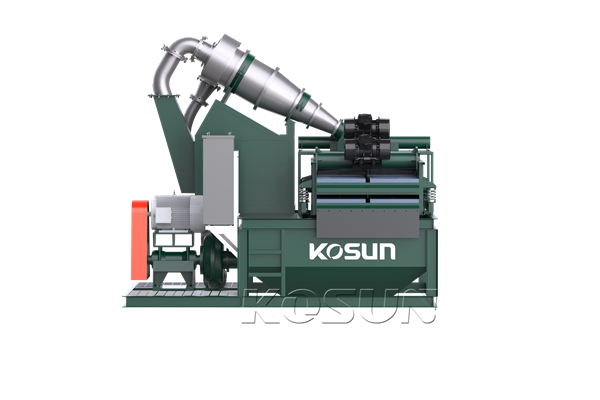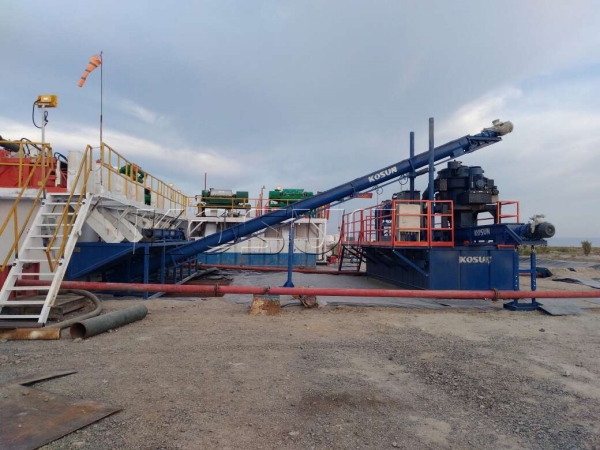The application scope of Xi’an KOSUN HDD Trenchless Mud Recycling System and slurry separation equipment is extensive, including directional crossing projects, slurry separation in trenchless projects, slurry purification and recovery in slurry balance shield tunneling construction, and other constructions that require positive and reverse circulation drilling, as well as slurry purification and recovery in large-diameter vertical wells and pile foundations.
The HDD Trenchless Mud Recycling System is developed, designed, and produced to meet the requirements of trenchless technology. It is used to purify and treat the slurry that returns from underground during the process of horizontal directional drilling. Solid control equipment such as shale shakers, desanders, and desilters are used to separate large-sized drill cuttings.
The shale shaker is used to screen coarse particles of drill cuttings.
The desander is used to separate fine sand in drilling slurry, with a separation particle size of 44 microns.
A desilter is used to separate fine silt in drilling slurry, with a separation particle size of 15 microns.
Slurry materials are added and mixed evenly through a mixing device to meet the performance requirements for reuse. The slurry is then pumped into the horizontal directional drilling system for repeated recycling.
The HDD Trenchless Mud Recycling System has also been applied in non-excavation engineering. Its main function is to recover drilling slurry, save costs for customers, improve economic benefits, and protect drilling rigs. It also protects the surrounding environment of the drilling operation.
Drilling slurry is an essential material in non-excavation construction and plays a vital role, during horizontal directional drilling. In the actual construction process, the slurry has functions such as hole cleaning, formation stabilization, drilling cuttings suspension, and cooling lubrication.
The quality of the slurry directly affects the construction quality. In non-excavation pipe-pulling construction, high-quality bentonite slurry and a small amount of polymer are commonly used to prepare polymer-enhanced mortar.
KOSUN- China Solids Control Leader&Drilling Waste Management Expert
Email: sales2@adkosun.com
WhatsApp/Wechat:+86 13379250593
Contact person: Monica Li
Online consulting:
http://www.kosun.com
http://www.kosuneco.com





